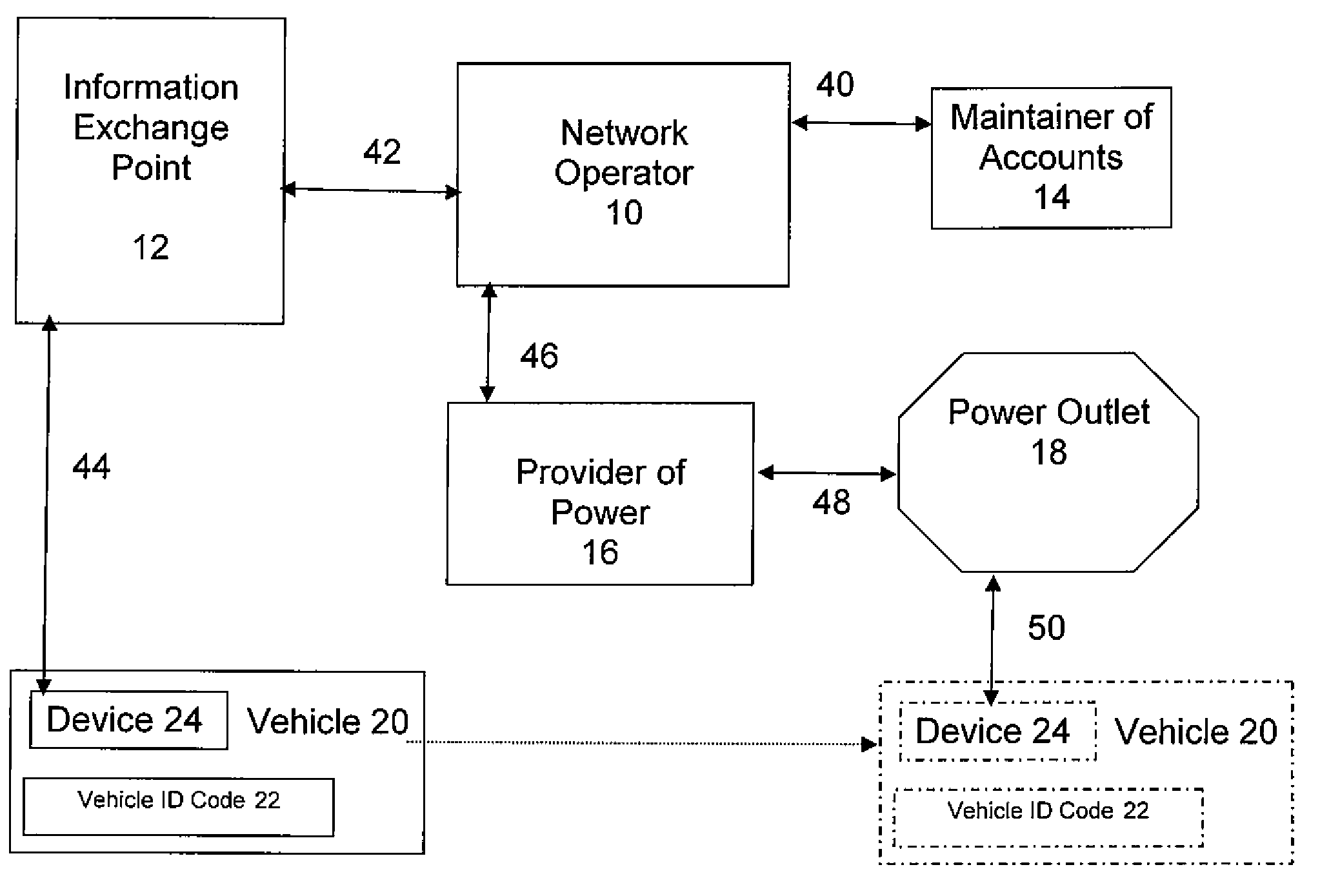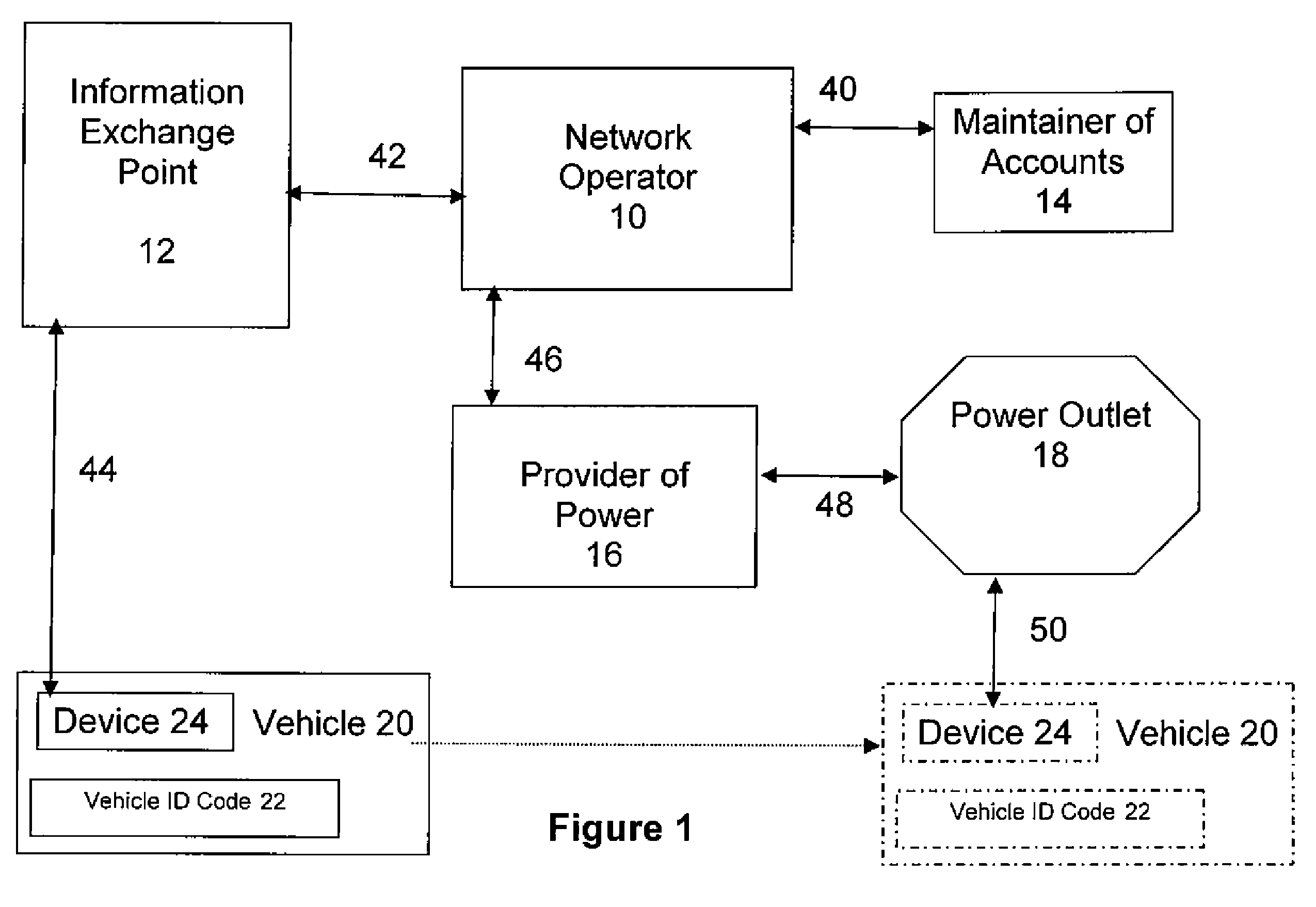Method and system for the authorization of and payment for electric charging of vehicles
a technology for electric charging and vehicle authorization, applied in charging stations, transportation and packaging, instruments, etc., can solve problems such as inability to have an account, and achieve the effect of facilitating power supply
- Summary
- Abstract
- Description
- Claims
- Application Information
AI Technical Summary
Benefits of technology
Problems solved by technology
Method used
Image
Examples
Embodiment Construction
Unless otherwise specified, the illustrated embodiments can be understood as providing exemplary features of varying detail of certain embodiments, and therefore, unless otherwise specified, features, components, modules, and / or aspects of the illustrations can be otherwise combined, specified, interchanged, and / or rearranged without departing from the disclosed devices or methods. Additionally, the shapes and sizes of components are also exemplary, and unless otherwise specified, can be altered without affecting the disclosed devices or methods.
As shown in FIG. 1, an exemplary system and method comprises a vehicle 20 (such as an electric or hybrid car) that has a vehicle ID code 22 associated with it and is equipped with a communications device 24 which may be a transponder or other wired or wireless connection. The vehicle may communicate 44 by means of the device 24 with a nearby information exchange point (“IEP”) 12. That communication may provide the IEP with the ID code 22 of ...
PUM
 Login to View More
Login to View More Abstract
Description
Claims
Application Information
 Login to View More
Login to View More - R&D
- Intellectual Property
- Life Sciences
- Materials
- Tech Scout
- Unparalleled Data Quality
- Higher Quality Content
- 60% Fewer Hallucinations
Browse by: Latest US Patents, China's latest patents, Technical Efficacy Thesaurus, Application Domain, Technology Topic, Popular Technical Reports.
© 2025 PatSnap. All rights reserved.Legal|Privacy policy|Modern Slavery Act Transparency Statement|Sitemap|About US| Contact US: help@patsnap.com


